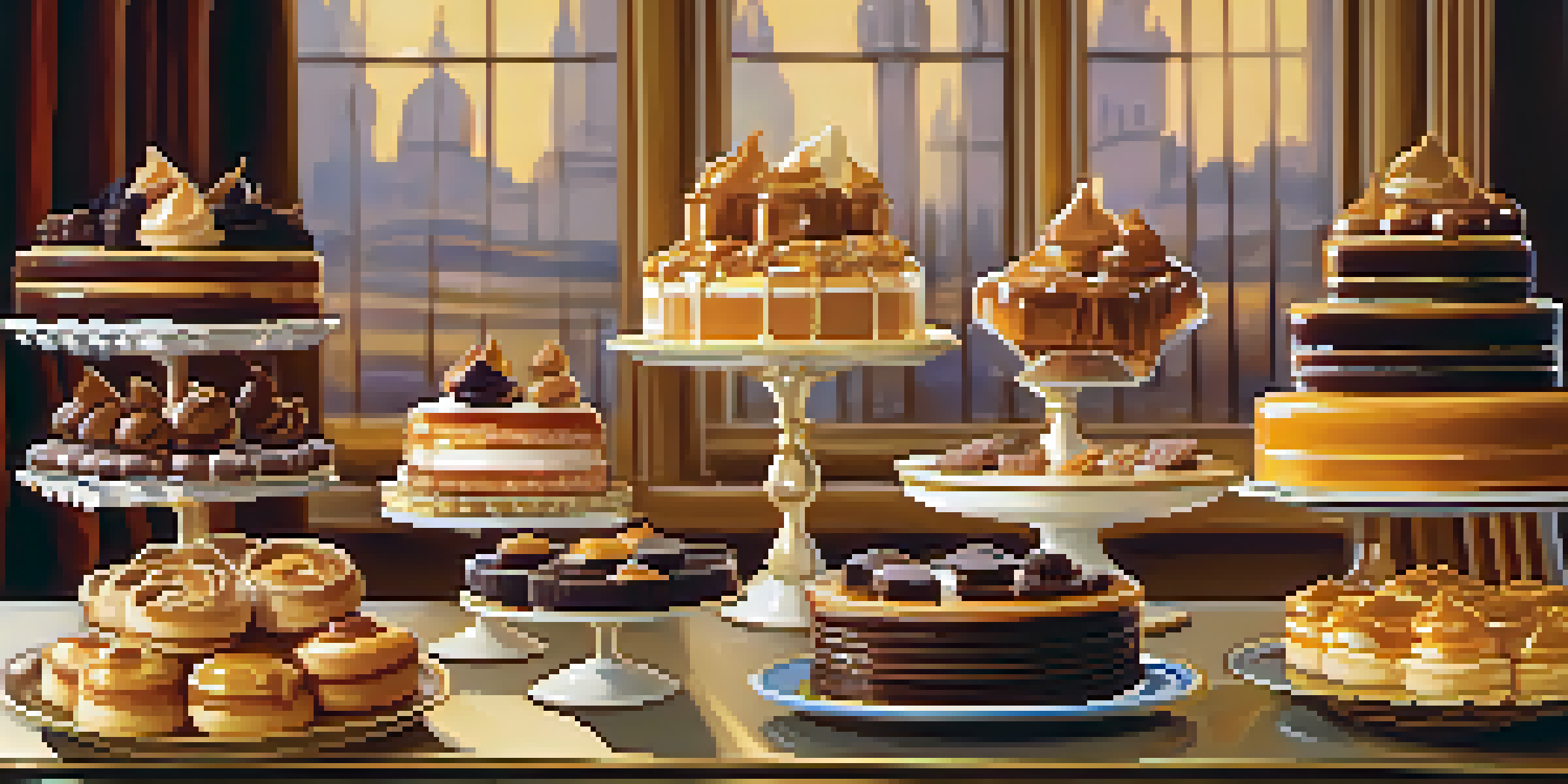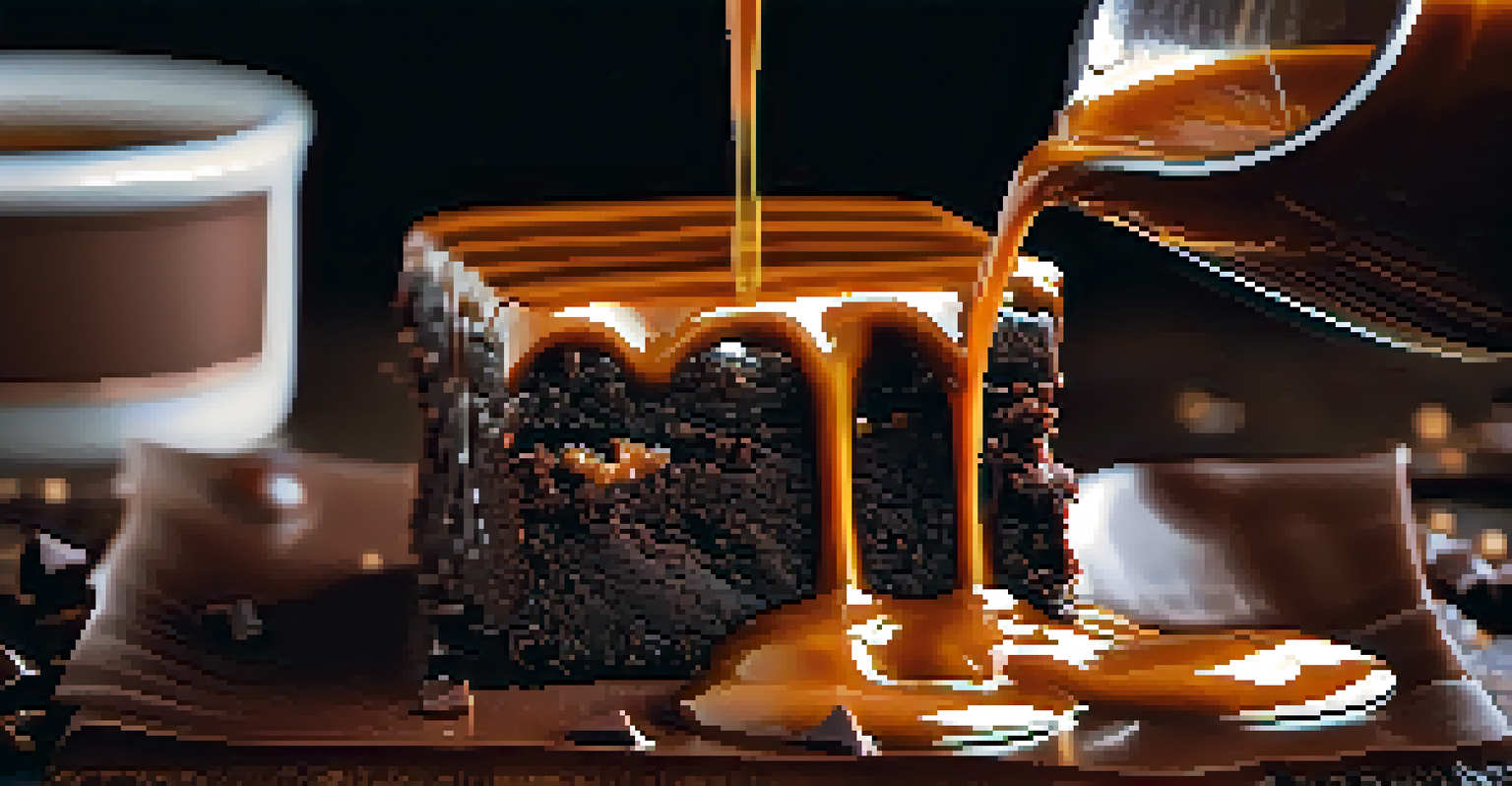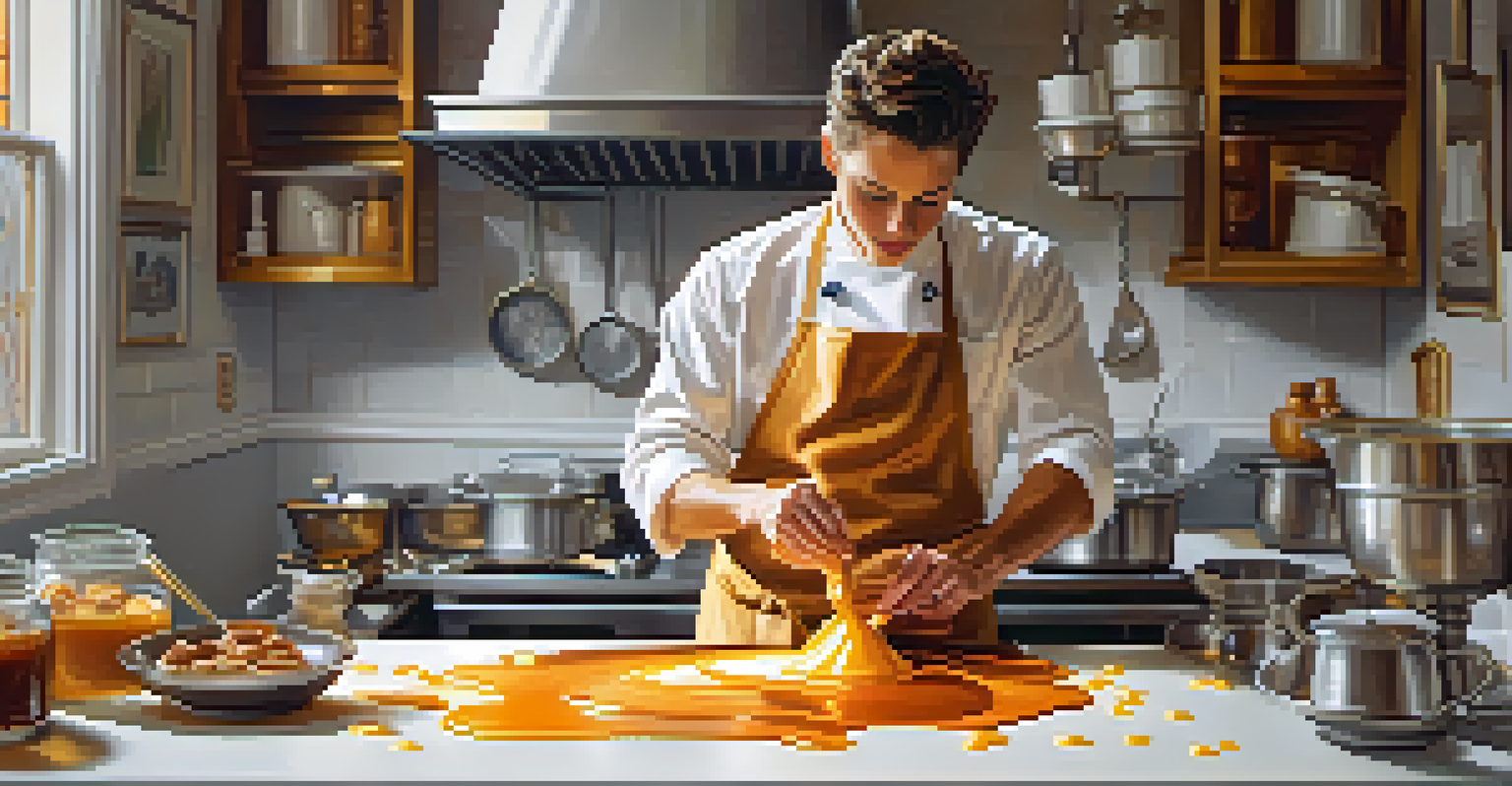The Magic of Caramel: Using It in Pastry Creations Effectively

Understanding Caramel: The Sweet Foundation of Pastries
Caramel is more than just a sweet treat; it's a versatile ingredient that can elevate any pastry. At its core, caramel is sugar that's been melted and transformed into a rich, golden syrup. This process creates a complex flavor profile that adds depth and sweetness to desserts.
Life is like a caramel; it can be sweet, sticky, and sometimes difficult to handle, but with the right technique, it can turn into something truly delightful.
There are various types of caramel, including soft caramel, hard caramel, and caramel sauce. Each type offers unique textures and flavors, making them suitable for different pastry applications. Understanding these variations is essential for any pastry chef looking to harness the full potential of caramel in their creations.
By learning the basics of caramel, you can create luscious fillings, elegant drizzles, and even delightful decorations. Whether you're making a classic caramel flan or a modern salted caramel tart, knowing how to work with this ingredient will help you achieve stunning results.
The Art of Making Perfect Caramel: A Step-by-Step Guide
Creating perfect caramel might seem daunting, but it's all about mastering the technique. Start by combining sugar and water in a saucepan over medium heat. As the sugar dissolves, be patient and avoid stirring. Instead, gently swirl the pan to ensure even cooking.

Watch closely as the sugar begins to change color; it will go from clear to a warm amber hue. Once it reaches your desired color, remove it from the heat immediately to prevent burning. Remember, caramel continues to cook even after being removed from the heat, so timing is crucial.
Caramel Basics for Pastry Success
Understanding the different types and uses of caramel can significantly enhance your pastry creations.
For an added twist, consider infusing your caramel with flavors like vanilla or sea salt at the end of the cooking process. This simple addition can transform your basic caramel into a gourmet ingredient that enhances your pastry designs.
Incorporating Caramel into Pastry Fillings and Sauces
Caramel can serve as a delicious filling or sauce in a variety of pastries. Think of a luscious caramel sauce drizzled over a chocolate tart or a rich caramel filling nestled inside a delicate éclair. The possibilities are endless, and the flavors work beautifully with many other ingredients.
Desserts are the fairy tales of the kitchen—a happily-ever-after to supper.
When using caramel as a filling, consider its texture. A softer caramel works well for creamy pastries, while a firmer version can add a delightful chewiness to cookies or tarts. Balancing the sweetness of the caramel with other flavors, like citrus or coffee, can create a harmonious dessert.
Additionally, caramel can be used to enhance the presentation of your pastries. A simple drizzle or a decorative caramel shard can turn a good dessert into a showstopper. The visual appeal of caramel adds an extra layer of magic to your culinary creations.
Creating Caramel Decorations: Adding Visual Appeal
Caramel isn't just delicious; it can also be a stunning decorative element for your pastries. By pouring hot caramel onto a silpat mat or parchment paper, you can create intricate shapes and designs that bring your desserts to life. Once cooled, these decorations can add a sophisticated touch to any pastry.
Another technique is spinning caramel into delicate threads, often referred to as spun sugar. This whimsical decoration can elevate your dessert presentation and impress your guests. Although it requires practice, the results are truly magical.
Mastering Caramel Techniques
Perfecting the technique of making caramel involves careful attention to color and timing for optimal flavor.
Consider using caramel decorations to complement your flavors, such as pairing a dark chocolate cake with a light caramel lace. This combination not only enhances the taste but also creates a visually striking dessert that is sure to delight.
Salted Caramel: The Trend That Won't Fade Away
Salted caramel has taken the pastry world by storm, and for good reason. The combination of sweet and salty flavors creates a balance that tantalizes the taste buds. This trend has made its way into various desserts, from ice creams to brownies, and it's not going anywhere anytime soon.
To make your own salted caramel, simply add a pinch of sea salt to your caramel mixture just before it cools. This enhances the flavor profile, giving a delightful contrast to the sweetness. Be cautious with the salt; a little goes a long way in achieving the perfect balance.
Incorporating salted caramel into your pastries can add a gourmet touch and elevate even the simplest recipes. Whether you’re making cupcakes, tarts, or cookies, a hint of salted caramel can transform your dessert into something extraordinary.
Troubleshooting Common Caramel Issues
Despite its magic, working with caramel can sometimes lead to challenges. One common issue is crystallization, where the sugar forms unwanted crystals instead of melting smoothly. To prevent this, always ensure your saucepan is clean and avoid stirring the mixture too much.
If your caramel burns, don't despair! While it can be tempting to salvage it, burnt caramel has a bitter taste that can ruin your dish. Instead, start fresh and keep a close eye on the cooking process to achieve that perfect golden hue.
Troubleshooting Caramel Challenges
Recognizing common caramel issues, like crystallization and consistency, can help you achieve better results in your desserts.
Another issue is achieving the right consistency. If your caramel is too thick, try adding a bit of cream to loosen it up. Conversely, if it's too runny, you may need to cook it a little longer to reach the desired thickness. With practice, you'll learn to troubleshoot these common problems effectively.
Final Thoughts: Embracing Caramel in Your Pastry Journey
Incorporating caramel into your pastry creations can be a delightful journey filled with sweet discoveries. From the rich flavor to the beautiful textures, caramel adds an undeniable charm to desserts that keeps people coming back for more. Embrace the versatility of caramel and let your creativity flow.
Experimenting with different types of caramel and various applications can spark inspiration in your pastry-making. Remember that even the simplest caramel can elevate your desserts when used thoughtfully. The key is to enjoy the process and have fun in the kitchen.

As you continue your pastry journey, don't hesitate to explore new caramel techniques and recipes. With each creation, you'll master the magic of caramel and impress everyone with your delicious, beautifully crafted pastries.